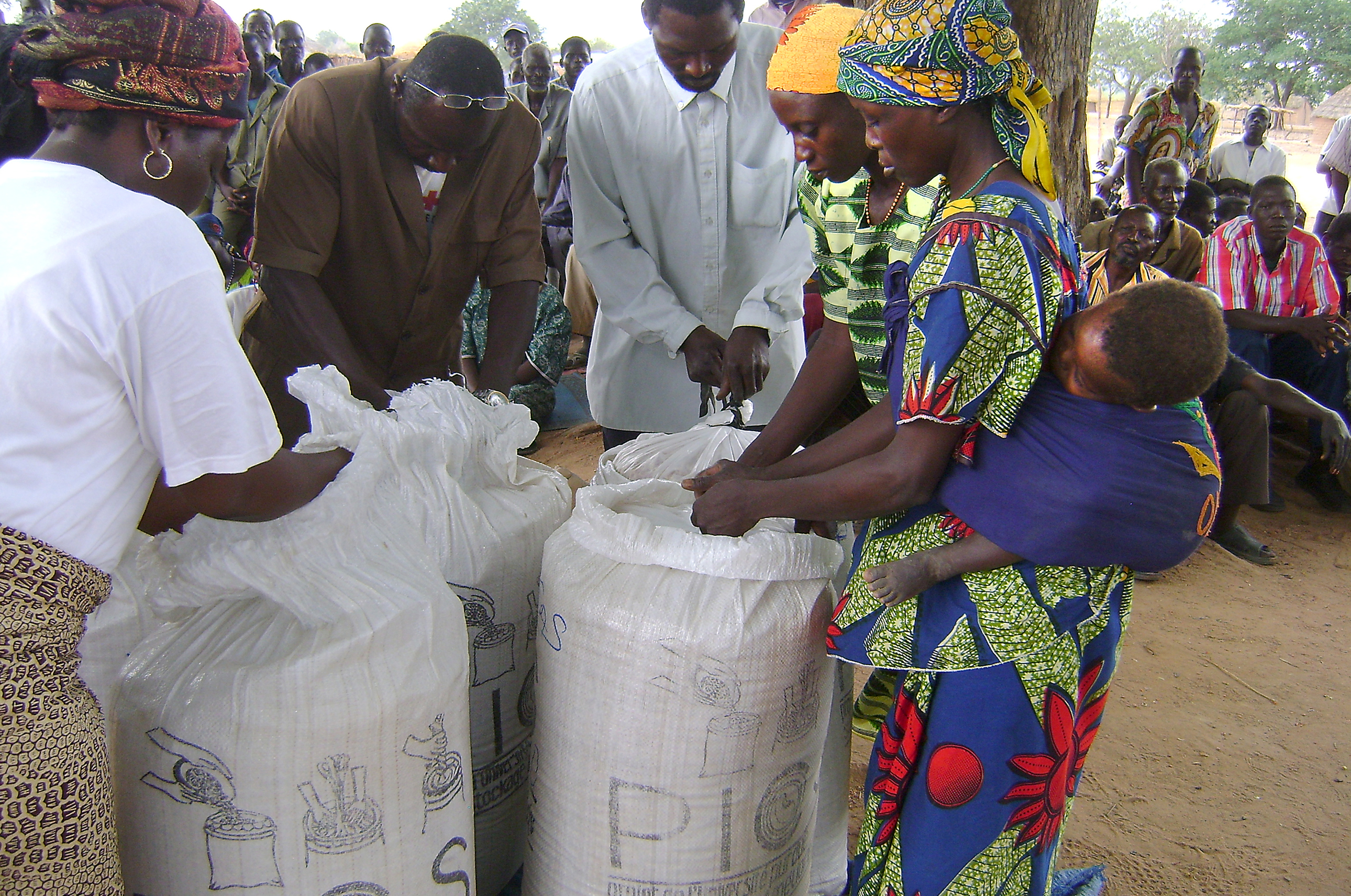 An improved air tight three layered bag is promising Makueni grain farmers reduced post harvest losses and aflatoxin causing fungi at a time when the region has borne the brunt of poor drying that has resulted in aflatoxin related deaths.
An improved air tight three layered bag is promising Makueni grain farmers reduced post harvest losses and aflatoxin causing fungi at a time when the region has borne the brunt of poor drying that has resulted in aflatoxin related deaths.
The initiative being sponsored by International Center for Insect Physiology and Entomology (ICIPE) started in August and is being led by scientists from the institution. The field trial of the new crop storage bag is ultimately geared towards preventing post-harvest losses. Insects devour families’ food supplies and deaths due to poisoning by a deadly fungus that can proliferate in bags that are traditionally used to store grain and legumes.
The triple-layered, tough plastic bags, designed at U.S.-based Purdue University, are already being used to protect cowpea crops in West Africa from insects. The ICIPE team hopes that the airtight PICS bags (Purdue Improved Crop Storage bags) could also prevent the growth of moulds in the more humid areas across Kenya.
Over the next six months, the team will be working with maize farmers in Makueni County, in the country’s southeast, to see if the bags can protect against pests and mould without affecting the quality of the grain. “Eventually, we hope to show that the PICS bags work for a variety of crops and protect against a variety of pests and contaminants. It’s a simple solution to a range of problems,” noted the lead scientist Christopher Mutungi.
The toughened bags cost about Sh200– about double the price of the woven plastic bags which are commonly used. A smallholder farmer would need perhaps 10 bags in a season, and could expect to use the bags for two or three harvests. “With these bags, we have a technology that could sort out these problems once and for all, at the farmer level,”explained Mutungi.
According to Mutungi, deaths reported as a result of grain poisoning from fungus and aflatoxin can be mitigated using these simple bags. “In Kenya, the biggest threat comes from insects nicknamed ‘Osama’ a type of weevil so destructive that farmers are left with nothing more than some powdery, inedible pulp.,” Mutungi is optimistic about the project explaining that the farmers who have been visited are highly interested and have also concurred that insect infestation is a big problem them.
The losses from the insects can be 20 to 30 percent of each harvest. Farmers with limited storage facilities are advised to sell their crop within three months, but by rushing to sell, they’re forced to accept low prices for their produce. “Farmers try to solve this problem by applying insecticides, but complain that they don’t work, and need to be reapplied twice or three times in a typical storage period. And of course, there’s a limit to how much insecticide can be used before the grain becomes dangerous to health hence making these bags ideal replacement,” explained Mutungi.
The bags prevent insect damage in two ways. The inner layers are made from tough polyethylene plastic that insects can’t pierce. And, when correctly closed, the bag is airtight, which kills any bugs already inside. “Once the produce is packed in and the bag is completely shut, you cut off oxygen and the insects suffocate,” said Mutungi. “When you compare this bag with ordinary bags, you find that losses in this bag are less than 2 percent, which is an 80 percent reduction,” he added.
According to the scientist, the use of the improved bags will be a win-win situation for both consumers and the farmers. “Consumers prefer chemical-free food and farmers prefer not to spend money on insecticides.”
While insects are easy to spot, there’s another invisible killer that can hide in stored crops. When moulds and other fungi infect grain, under the right conditions, they can produce a potent poison – aflatoxin. According to Mutungi, aflatoxin is produced by the Aspergillus fungus, common in soil, which can infect crops in the field and in storage. It’s carcinogenic and potentially deadly, but also odourless, tasteless and colourless, so farmers struggle to recognize the signs of contamination.
During an acute outbreak, patients die from liver failure within a week or two, but even low-level exposure to the toxin over a lifetime can cause liver cancer and stunt the growth of children. Kenya has the world’s highest levels of aflatoxin poisoning, with a series of outbreaks since 1981. The worst outbreak, in 2004, affected 317 people, half of which were children, and claimed 125 lives. “The outbreaks appear to be connected to maize, and it appears to be happening in one particular region of the country, Makueni County, which is where we are conducting our trials,” said Mutungi.
The mould infects plants in the field, especially when they’re grown in stressful conditions, and the humid air in this region means that the mould can quickly spread in storage. The problem is even worse if the grain is under heavy attack by insects. It isn’t possible to prevent the naturally-occurring mould from infecting plants, but the bags could stop further contamination. When correctly sealed, the bags are airtight, so they deprive the mould of two things it needs to survive: oxygen and moisture.
The scientists will involve the whole community as they sample maize that has been harvested and stored by local farmers. “We want them to see a difference between what they do – the technologies they use and the storage methods and this new technology,” said Mutungi. In the long run, Mutungi noted that depending on the success of the first trialing of maize, they will run similar trials on other staple crops, including common beans, green grams, cowpeas, and pigeon peas.
















Comments powered by CComment